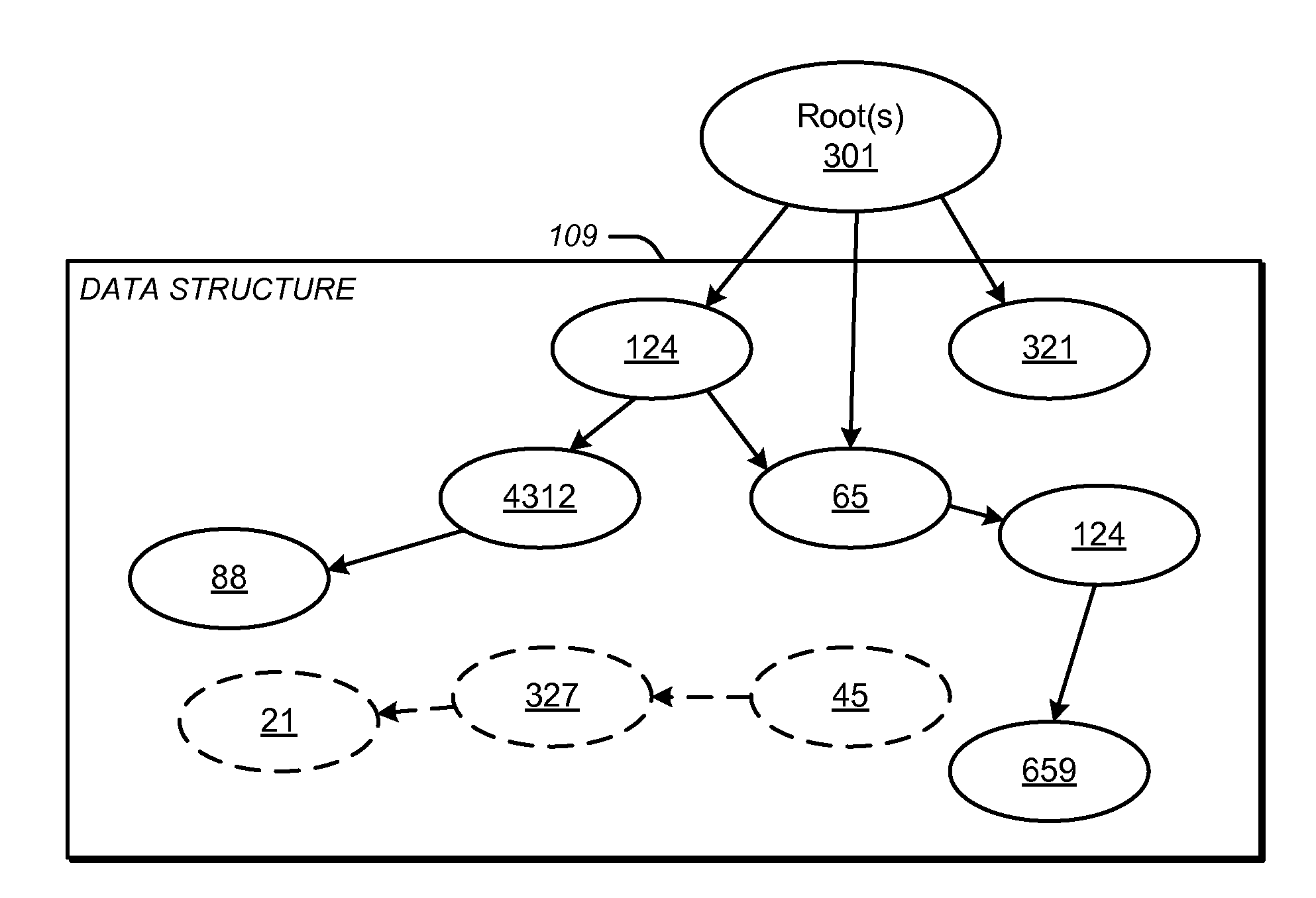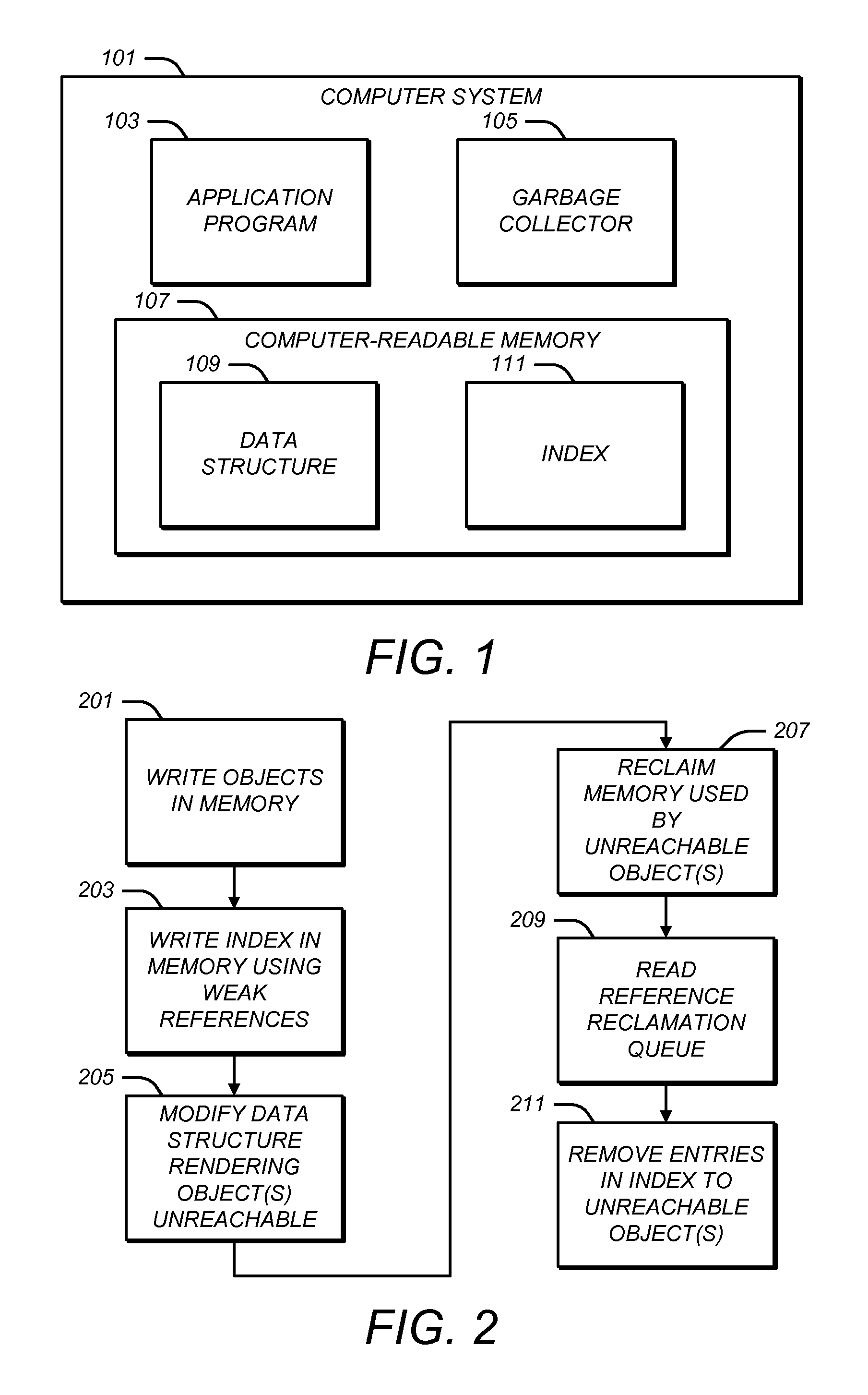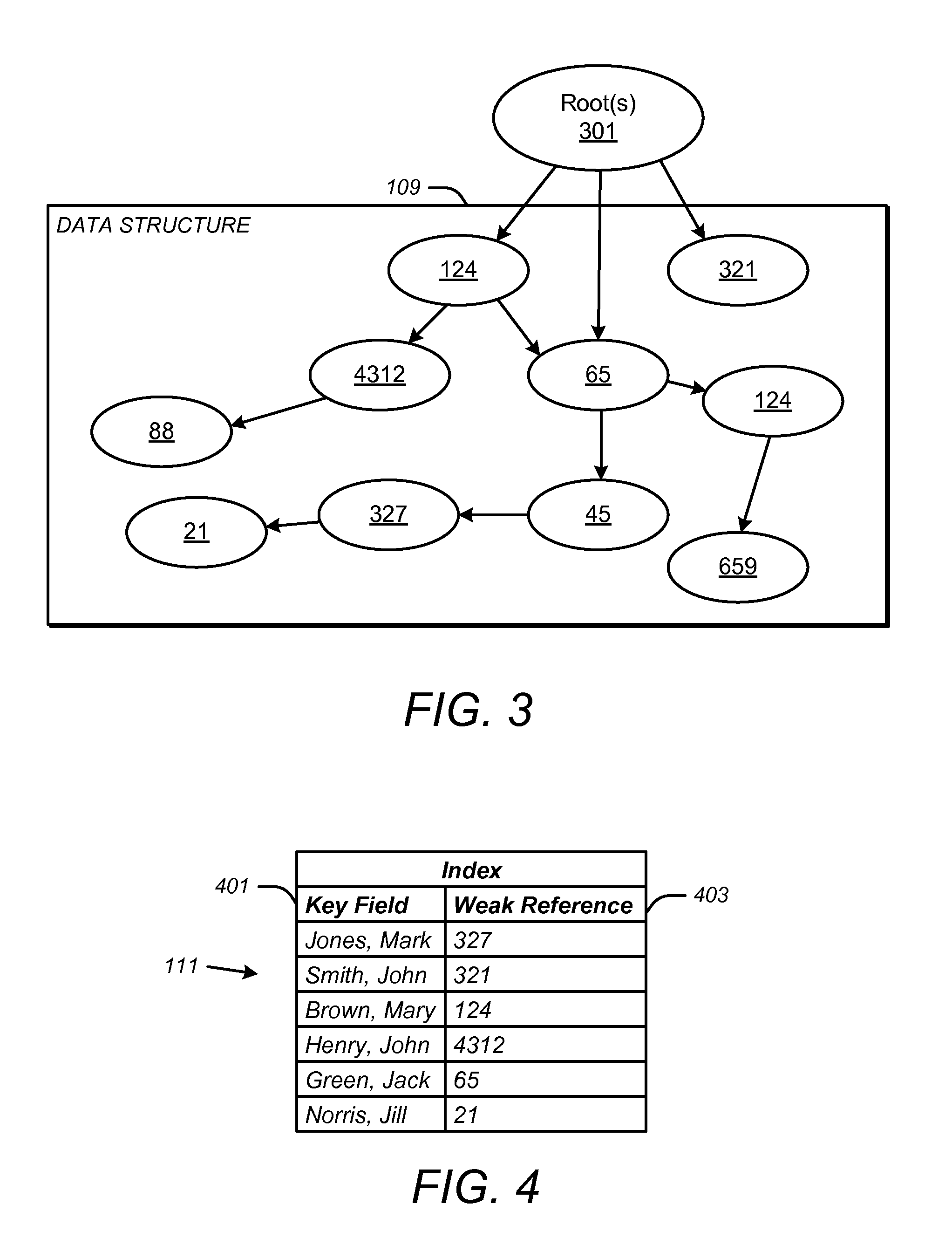Automated memory management of indexed data using weak references
a technology of automatic memory management and index data, applied in the field can solve the problems of index table failure to meet the requirements of automatic memory management, and increase the size, cost and complexity of application programs
- Summary
- Abstract
- Description
- Claims
- Application Information
AI Technical Summary
Benefits of technology
Problems solved by technology
Method used
Image
Examples
Embodiment Construction
[0031]Illustrative embodiments are now described. Other embodiments may be used in addition or instead. Details which may be apparent or unnecessary may be omitted to save space or for a more effective presentation. Some embodiments may be practiced with additional components or steps and / or without all of the components or steps which are described.
[0032]FIG. 1 is an example of a computer system 101 which may generate and store a data structure 109 and an index 111 to that data structure 109.
[0033]FIG. 2 is an example of a memory management process performed by the computer system 101 illustrated in FIG. 1. The process may be performed by other computer systems. The computer system 101 may perform other processes.
[0034]As illustrated in FIG. 1, the computer system 101 may include an application program 103, a garbage collector 105, and computer readable memory 107 containing the data structure 109 and the index 111. The computer system 101 may contain additional components, such as...
PUM
 Login to View More
Login to View More Abstract
Description
Claims
Application Information
 Login to View More
Login to View More - R&D
- Intellectual Property
- Life Sciences
- Materials
- Tech Scout
- Unparalleled Data Quality
- Higher Quality Content
- 60% Fewer Hallucinations
Browse by: Latest US Patents, China's latest patents, Technical Efficacy Thesaurus, Application Domain, Technology Topic, Popular Technical Reports.
© 2025 PatSnap. All rights reserved.Legal|Privacy policy|Modern Slavery Act Transparency Statement|Sitemap|About US| Contact US: help@patsnap.com



